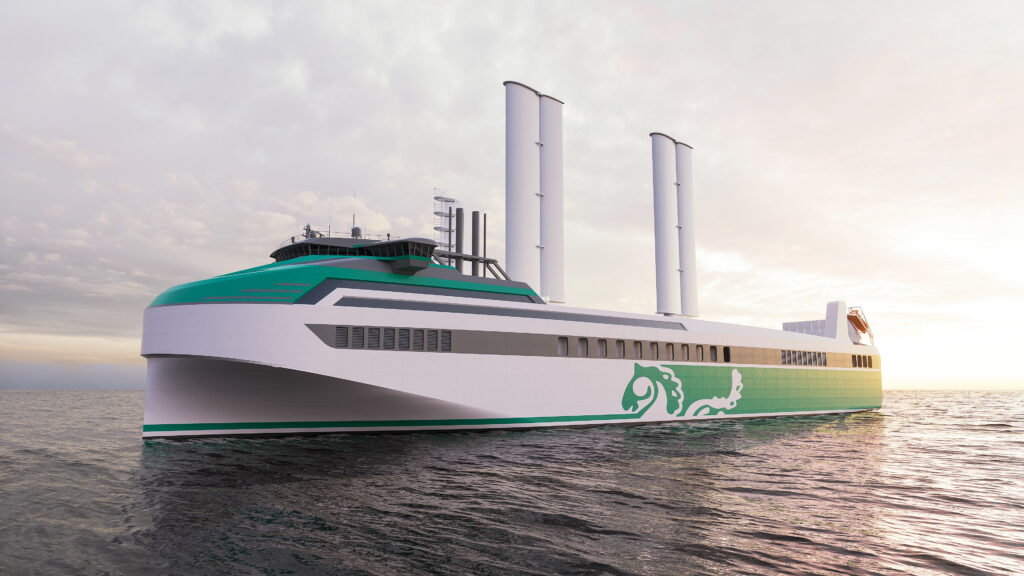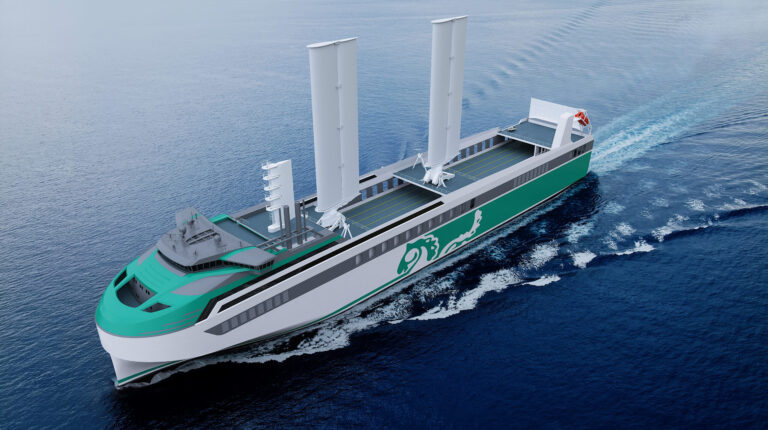This week’s Donsö Shipping Meet saw the unveiling of a new vessel concept from Wallenius Marine and Knud E. Hansen. The Sleipner RoRo concept builds on the award-winning Sleipner PCTC concept and on operational data from the Sleipner vessels Future Way and Way Forward. The new ro-ro design, which includes an engine room in the bow, creates (despite a length of 170m) a large cargo capacity of 2,720 lane meters, equivalent to 181 trailers.
The Sleipner RoRo has been designed so that loading and unloading can be carried out quickly and efficiently via the stern ramp and main deck across the full width of the ship, as the engine room has been relocated to the bow. Propulsion is provided by a dual-fuel electric powertrain (LNG/LBG/MGO/biodiesel) and azipods, which provide good maneuverability and speeds up and facilitates approaches in crowded ports.
The concept is futureproofed with provisions for wing sails, shore power and alternative fuel sources such as batteries and fuel cells, which can reduce energy consumption and emissions.

“The ro-ro segment of short-sea shipping plays a key role in the transition to more sustainable transport, not least through the transfer of goods from land to sea transport,” said Urban Lishajko, head of ship design at Wallenius Marine. “At the same time, the industry is facing a generational change where new tonnage is needed to meet capacity needs and demands for increased energy efficiency and reduced emissions. Together with Knud E. Hansen, we have developed a concept that balances capacity, operational efficiency and environmental performance.”
“With our combined experience and knowledge from the operation, new-building and design of various ro-ro ship concepts, we can take advantage of solutions that have worked well for other ships and develop something new,” added Lishajko. “Our strength lies in finding the best combination of design and technology for each ship’s specific mission, with the aim of continuously reducing emissions and other environmental impacts.”



